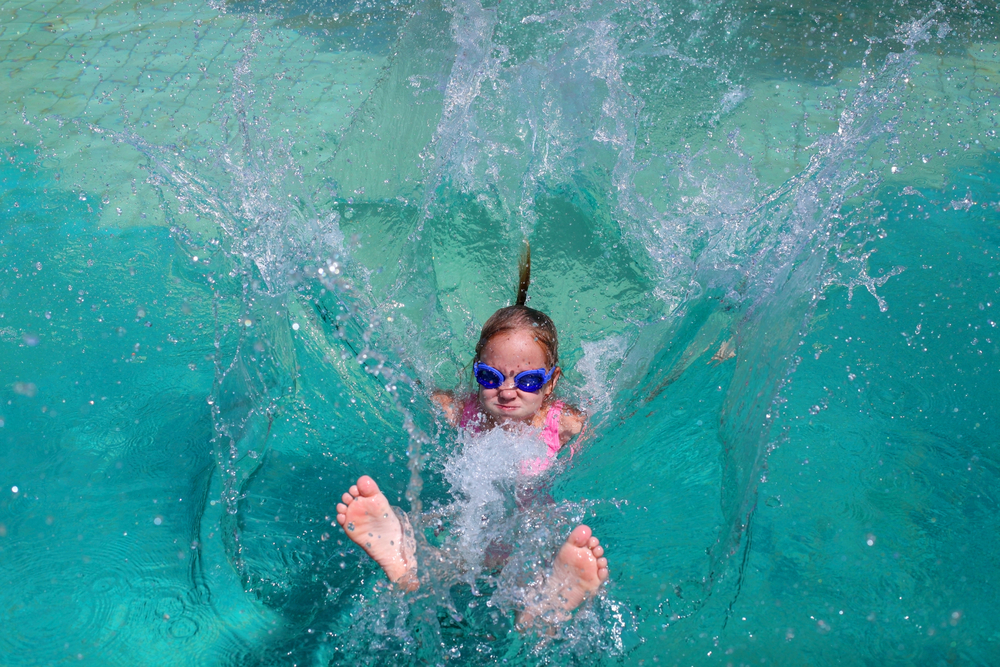When it’s hot, kids want to get wet.
But when kids are in or near water, you can’t be too safe.
Here’s what you need to know to keep their splashing safe, courtesy of the American Academy of Pediatrics.
- NEVER (ever, ever) leave children alone in or near water, even for a moment!
- Less experienced swimmers and children under age 5 should have an adult within arm’s length providing touch supervision, preferably one who knows how to swim and perform CPR.
- Designate a “water watcher” to pay constant attention when kids are in, on, or around water, even if lifeguards are present. That means NO reading, playing cards, or being on the phone while supervising children.
- Make sure pool gates open out from the pool, and self-close and self-latch at a height children can’t reach. Consider adding alarms on the gate to alert you when it’s been opened.
- The safest pool fence is one that surrounds all sides of the pool and completely separates it from the house and yard. If your house serves as the fourth side of the fence, install an alarm on the exit door to the yard and the pool. For additional protection, install window guards on the windows facing the pool. Drowning victims have also used pet doors to gain access to pools.
- Keep a portable telephone and rescue equipment such as a shepherd’s hook and a life preserver, and a portable telephone, near the pool. Choose rescue equipment made of fiberglass or other materials that don’t conduct electricity.
- Avoid inflatable swimming aids. They’re not a substitute for approved life jackets.
- Your decision to enroll a child over age 1 in swimming lessons should be based on his developmental readiness and exposure to water. But swim programs should never be seen as “drown proofing” a child of any age.
- Large inflatable above-ground pools are popular for backyard use, but children can fall in if they lean against the soft side of these pools. It’s still essential to surround these pool with an appropriate fence, just as you would a permanent pool, so that children cannot gain unsupervised access.
For more summer safety tips from the American Academy of Pediatrics, visit aap.org.






